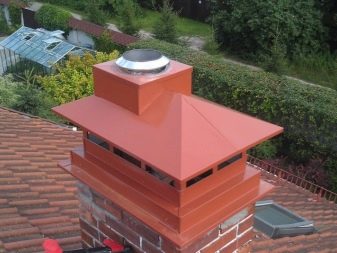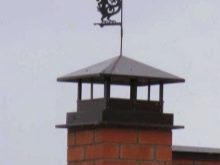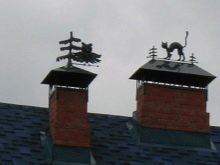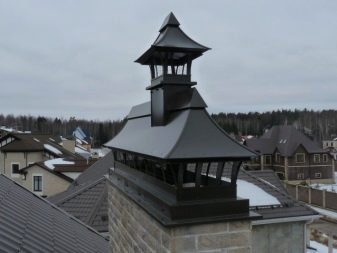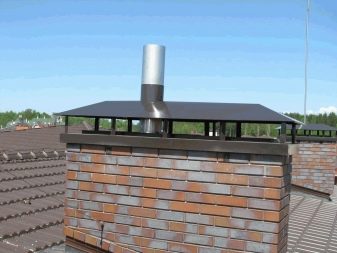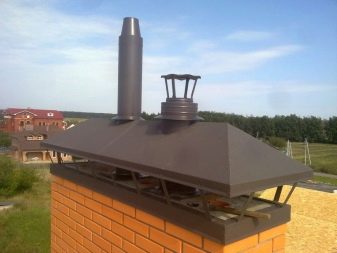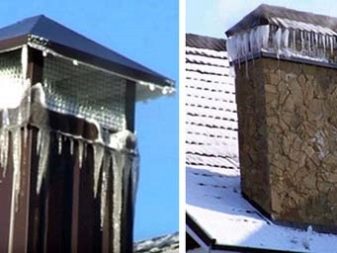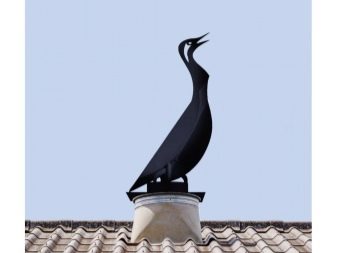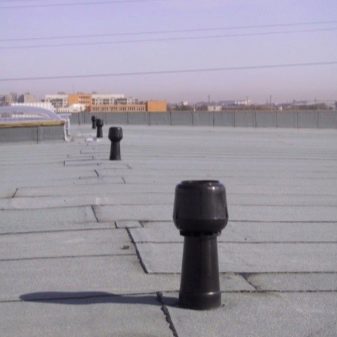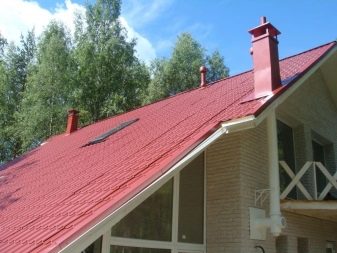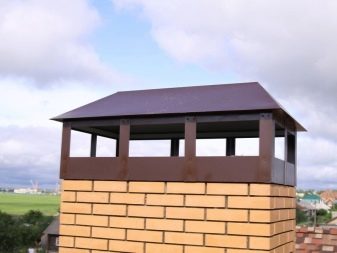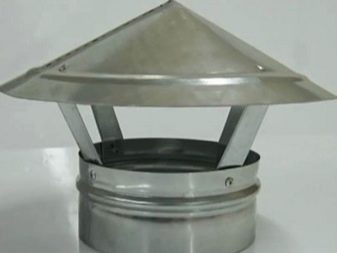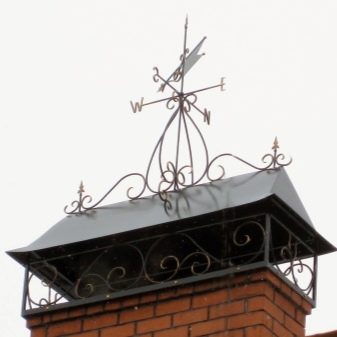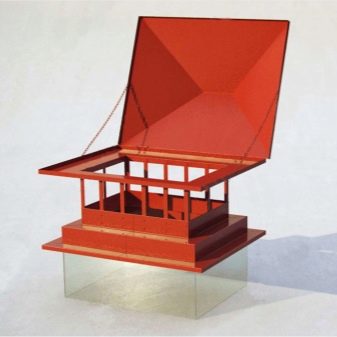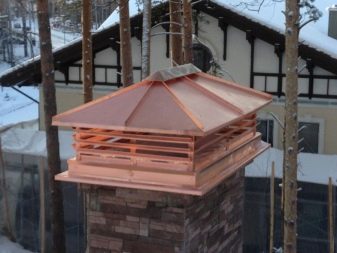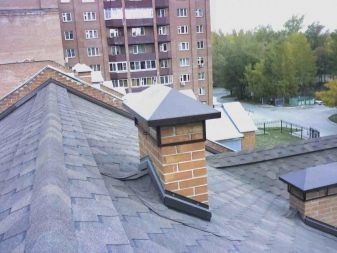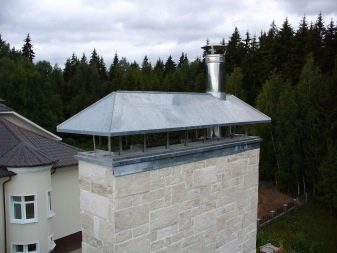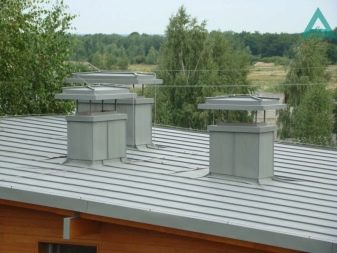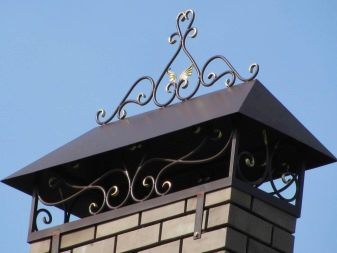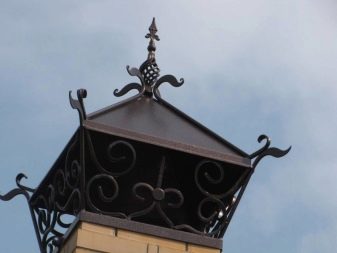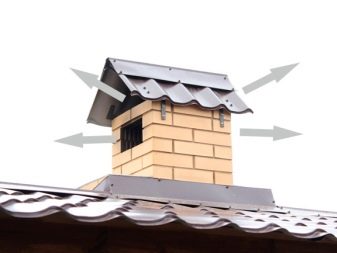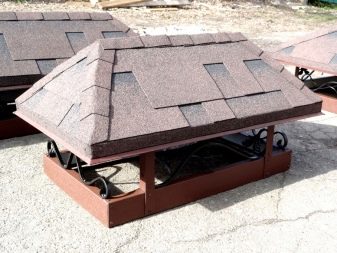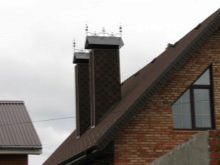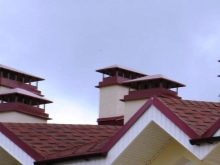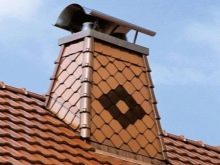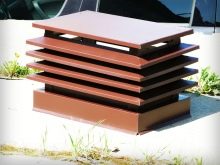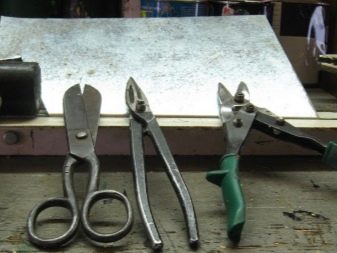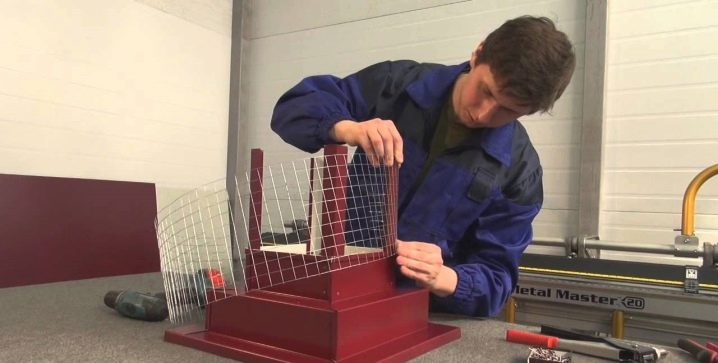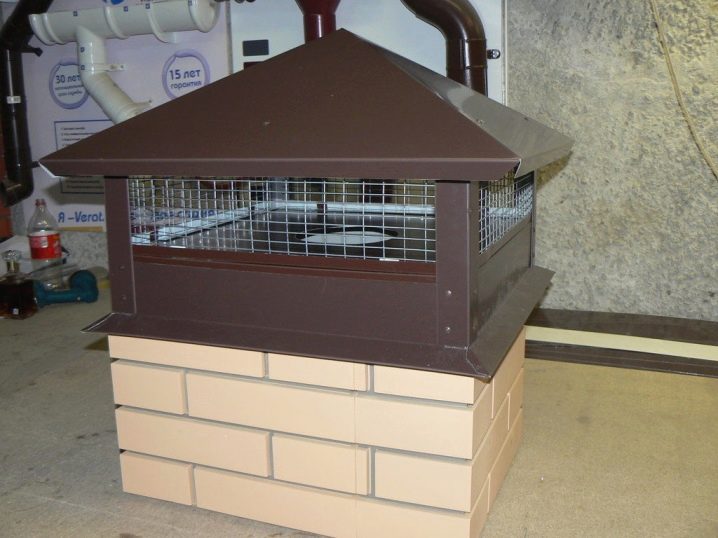What is a wind vane and where is it used?
In order for thermal equipment to function with full energy returns, it is necessary to use an additional mechanism, which is called a flygarka. Before you acquire such a device, you need to familiarize yourself with its features and varieties.
What it is?
Flyugarka is a protective device for pipes, as well as for heat ventilation and chimney channels located in the pipe. In the people the flygark is called an umbrella, a chimney or a cap. The first impression of a wind vane in a person who is unfamiliar with such a device is that this is a regular decoration for the roof. The device consists of a collection of smoke and gas and a cap on the legs.
The selection of the chimney on the pipe is carried out in such a way that both the chimney and the chimney are of the same shape. For example, a round pipe is required for a round pipe. With other forms, a similar situation occurs.Flygarki device must have a certain weight (at least 50-60 kg). If the weight of the device is much less, then gusts of wind will carry it off the pipe. As the decor is often used weather vane, which is also a meteorological device. Its main task is the measurement of wind indicators.
Currently it is used as a decorative element, because it can be made in the form of various elements (house, fungus) and animals: a rooster, a cat, a dog, a dragon, a stork. The most popular weathervanes in the form of a rooster. Even in ancient times it was believed that this bird is a talisman. After all, the rooster symbolizes the new day, and also protects the house from evil spirits and from other troubles.
Flyugarku made of various building materials: galvanized steel, copper and stainless steel. Of these materials, copper mechanisms are very popular, they have excellent performance properties.
Benefit and harm
The installed chimney not only protects the chimney from condensate, but also has the main functions:
- It is an obstacle to the ingress of various debris in the chimney.
- Extends the service life of the pipe, because precipitation practically does not fall inside the chimney.
- The aesthetic appearance of the vane allows you to create a unique appearance throughout the house.
- Some varieties of this device have the ability to increase thrust in the chimney. For this purpose were invented flyogark with deflector. But conventional designs can increase traction by 20%.
If the room is heated by a gas boiler, the installation of various umbrellas and hubcaps is prohibited. The chimney for gas equipment is equipped with a nozzle with an open top nozzle. The prohibition is explained by the fact that in winter, the wind vane freezes over and a layer of ice forms on it. Over time, the icicles formed obstruct the working opening, reducing the thrust force. In the future, carbon monoxide accumulation will occur, which will lead to tragic consequences. The reason for the collection of condensate and icing flygarki is that gas heating refers to boilers with high efficiency. Solid fuel boilers have lower productivity, so the installed vane is not subject to the formation of condensate.
To protect the gas equipment are used smokers of complicated construction, which are presented in the form of a box covering the brick base. At the same time on the ventilation pipes are installed chimneys with a roof, and the chimney is equipped with a nozzle.
The damage that the installed wind vane can cause is damage to the roof of the house. In case of improper installation, wind gusts will demolish the structure, which will damage not only the roof of the building, but also the house.
Often, to increase the exhaust air, various exhaust devices are installed on the top of the funnel pipe: a wind vane, a deflector. Such an additional device at the outlet of the sewer riser does not increase traction, but also prevents the exit of gases from the sewer pipe. Flyugarka increases the formation of condensate, which will continue to enter the sewer. In winter, the accumulated moisture freezes, which leads to a decrease in thrust.
Application
The installation of the wind vane is performed in almost any room where there is a chimney, ventilation outlet, gas duct (bath, house). In order for birds not to nest in this fixture, it is necessary to acquire a construction with a grid. There are models that are equipped with a double bottom, thanks to such a structure in the winter time will not form icicles. The standardized angle of the cap is 40 degrees. It is under this slope that the snow melts.
In the northern regions of Russia, the wind vane is used as a windproof device. For this purpose, a wind vane with a regulating vane is used, which closes the flap during a strong wind. The weather vane can be plastic or metal. Such a mechanism allows a free exit of combustion products, as well as in case of gusts of wind, the chimney does not blow.
Chimneys that are not equipped with a wind vane are exposed to precipitation. Liquid, getting into the pipe, gradually destroys it. Some varieties of weathervanes perform the function of a lightning conductor. It is often the case for a chimney pipe that a wind vane is installed with a flame arrester that protects the roof from small particles of burning solid fuel (wood) from falling on it.
Water vapor, which comes from the living space of the house, has a negative effect on the roof of the pitched and flat roof. These types of roofs need arrangement of additional ventilation. For this purpose, use the installation vane (aerator).
In flat roofs, aerators are mounted evenly over the entire surface of the roof or at the joints of heat insulating plates. For cattle roofs such a device is mounted closer to the ridge, at a distance of 50 cm.
For good ventilation, a wind vane is installed, which is equipped with fixed planes installed parallel to the axis of the pipe. These planes are designed to protect the valves from closing under the influence of wind flow. This design prevents contaminated air from entering the air intake.
The selection of the cap on the chimney is performed so that the device matches the size of the chimney and the type of channel:
- If the room is heated with gas, then the vane should be made of nickel-chrome tin.
- If the house is heated by a fireplace, a boiler or a stove with solid fuel (wood), in this case the stationary cap will not work, and it is best to use a removable cap. This device allows for cleaning work.
Kinds
Manufacturers perform flygarki various models:
- Standardized constructionwhich is presented in the form of a small house and has the form similar to a chimney. Such houses have various design decorations.
- Device with a round cap. This form is mainly made by foreign manufacturers, but it is very popular in Russia. Flyugarka has excellent aerodynamic properties, and also prevents precipitation from entering the interior of the pipe.
- Flygun with a multi-slope roof, which is a mechanism with a small roof with 2 ramps on each side. This form provides the best protection against snow. An additional decoration for this form is a weather vane in the form of animals or other elements.
- Roof opening mechanism. Thanks to this functionality of the cover, it is possible to provide additional power of thrust. This feature allows you to clean the chimney without removing the vane.
Materials and Forms
In the 19th century, the wind vane were only forged, and there was simply no other way to make a device of metal. At present, for the manufacture of the wind vane, various materials are used, on which the performance of the mechanism will depend on. Manufactured materials include:
- Copper. Copper constructions will last a long time (about 50 years). The mechanisms for fixing the copper vane should also be made of copper,after all, a chemical reaction may occur with other materials, which will further lead to a modification of the structure. The color of copper structures under the influence of UV rays can vary from brown to green.
- Galvanized iron and steel. These materials are not inferior to copper construction in terms of reliability and durability. These materials have the ability to dye in any color.
- Stainless steel. Stainless steel construction will last about 20 years. These devices are resistant to strong heat. The only drawback to the use of stainless steel is that such products eventually lose their original appearance.
- Zinc Titanium - this is a modern building material, which in its performance does not differ from copper structures. The service life of at least 50 years.
Flyugarki with decoration
Artistic chimneys are made in the forges of hardened iron. Forged structures are not only creative design of the building, but also ensure the efficient operation of heating systems.
Roofing elements, made by forging, have a complicated structure,which must necessarily contain 3 main elements:
- Base.
- The screen protecting the roof of the wind vane from sparks.
- The roof that closes the pipe from precipitation
Forged products are different from other materials for their strength and durability. Universal products can be ordered in the profile workshop, as long as the calculations and measurements of the structure are made correctly.
Often there are designs made of roofing materials: metal, profile sheet, covered with natural tiles. Such chimneys are used not only for chimneys, but also for ventilation.
The construction market offers a large selection of vane, which differ in configuration:
- Double gusset. This design does not allow a large amount of snow to accumulate. It is made of sheet metal, and fixation is performed by brackets to the apron-drip.
- Chetyrehskatny chimney. Complicated design resembling a hipped roof. Basically, such a cap is used for rectangular brick pipes.
- Bunk chimney installed for chimney, stove and ventilation pipes.
- Semicircle umbrella. This device is used as a decor for a building decorated in a European manner. But this design is mainly used as an ornament; it does not contribute to an increase in the thrust force in the chimney.
- Flat smoker mounted on the roof of the building, decorated in the style of minimalism. There is no inclination in this design, which leads to the accumulation of snow. A large load on the stand will lead to their deformation.
- Flyugarka with a cone-shaped umbrellawhich is mainly installed on a stainless steel chimney. Installation of the drip in this case is not performed.
As a decor, it is preferable to install a pinch and tent flyugarok, but to make these devices independently is problematic.
Manufacturing Technique
You can do the fly-fly yourself, but if there are no special skills, it is better to make the most common design. After reviewing the drawings flyuharok, you must determine the size that is suitable for your chimney.For self-manufacturing of the wind vane, you can purchase an already prepared construction plan by changing the device parameters.
When installing the wind vane on the chimney structure, it is necessary to familiarize yourself with the requirements that the structure should have.
It is necessary that the material is resistant to corrosion, high temperature conditions and has a long service life.
Preparatory stage
At this stage, it is necessary to draw on the key points in the manufacture of the wind vane:
- The efficiency of the cap installation will depend on the measurements made correctly.
- The choice of the finished project or the manufacture of a personal drawing of the construction of the wind vane.
- The choice of building material. To perform the chimney, you can use galvanized steel, sheet metal with a polymer coating.
- The use of protective mesh, which prevents the penetration of birds into the chimney.
- Screen with heat reflection function. The device does not allow overheating of the polymer coating on the pipe.
Installation
For the manufacture of flyugarki need the following tools:
- galvanized steel;
- scissors for metal;
- welding machine or fastening elements;
- marker;
- mushrooms;
- rubber mallet;
- roulette;
- roofing screws.
Installation is carried out in strict sequence.
- First you need to make measurements of the chimney. That the design functioned correctly, it is necessary to do measurements correctly.
- Now a pattern is created for the future of cardboard paper. It is necessary to take into account one nuance: the hood should be easily put on the chimney, so a gap of about 4 mm should be added to the dimensions of the pipe.
- Marker drawing is transferred to a metal sheet, and then cut with metal scissors.
- When a metal blank is cut, it must be bent. In those places where the edges will connect, you need to make holes.
The distance between the holes should be about 15 centimeters. Next is the fixation of the chimney rivets.
Now a sample of the apron-drip must be applied to the metal and cut. It is important that the product is cut to size, otherwise the device will not function reliably.
- Brackets are made of metal plates, which are further welded to the chimney and drip. Places of welding are treated with a special primer mixture for metal.
- At the final stage, the anti-corrosion coating is processed and stained. The finished device must be dried for about 2 days, only after complete drying can be used.
Installation
To self-install the wind vane, you must perform consecutive actions that will affect the operational life of the product.
- Previously in the skirt of the product holes are made. The number of holes will depend on the size of the fixture.
- Parallel holes are drilled into the chimney, into which the screws are inserted.
- Using a screwdriver, the wind vane is fixed to the chimney.
The process of fixing the chimney to the pipe is significantly simple, but you need to make sure that the mechanism is securely fixed so that a strong wind does not tear the structure.
To learn how to make flyugarki with your own hands, see the next video.

